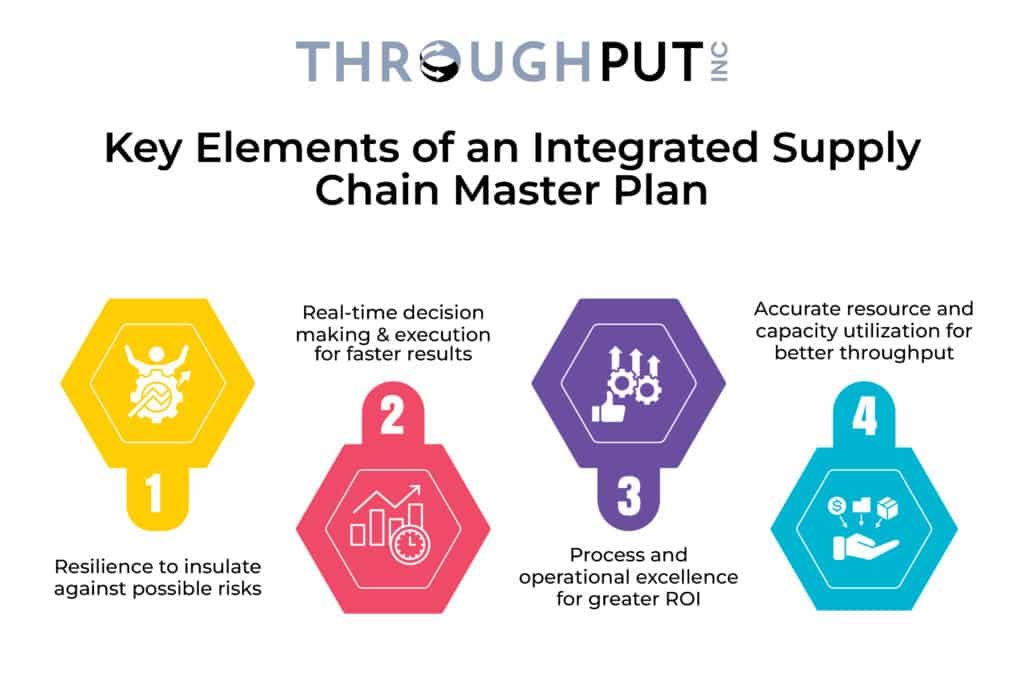A Quick Starter Guide to Supply Chain Master Planning

An integrated and centralized supply chain master planning strategy is a no-fail formula in any given circumstance for growing organizations.
While supply chain planning aims at optimizing the delivery of goods, services and necessary nuggets of information from one end to the other end of the value chain, just having this isn’t enough.
It is important to implement a well-orchestrated, centralized supply chain planning mechanism, where supply and demand are balanced and necessary what-if scenarios and real-time demand fluctuations are also considered.
In addition to this, accurate inventory visibility across the end-to-end network along with intelligent forecasting and business strategy-driven demand prioritization, together form the foundation of a synchronized and well-connected supply chain master plan.
Let’s get right into the details.
The Erratic Swings Between Supply and Demand
Owing to the market dynamics over the past year, there have been several fluctuations in supply and demand and this has been a constant feature. These fluctuations have resulted in creating huge sales and inventory challenges for manufacturers across industries.
If supply chain planners can be successful in aligning up and downstream operations without burning a hole in their pockets, a lot of significant investments already made, can yield the desired results.
A master supply chain planning mechanism which uses real-time data to help predict turbulent shifts in the market, can be a game-changer here. This gives updated necessary feeds to ensure a well-balanced supply chain strategy which can cater to possible uncertainties and bottlenecks in due course.
When supply planners have an accurate and complete view of orders and the necessary resources needed to execute them, they can easily get answers to the below questions using this data:
- How can an accurate supply chain forecast help planners directly obtain accurate revenue calculations? (S&OP)
- How can it help match appropriate inventory stocks based on demand trends?
- How can it help improve the overall bottom line for a particular line of product or service?
Four Key Elements of an Integrated Supply Chain Master Plan
So what does an integrated supply chain master plan look like?

- Resilience to insulate against possible risks
To begin with, an integrated supply plan is one which is resilient and this means it is able to quickly respond to operational disruptions and uncertainties. This happens by establishing a sound contingency plan which is flexible and acts like a springboard in the face of disruptions.
A resilient supply chain master plan must be able to easily predict and forecast any unforeseen challenges well in advance to ensure the operations framework is insulated against them.
Therefore, resilient supply chains can create a competitive advantage by creating a strong supply chain resilience strategy that aims at disruption avoidance and protection.
2. Real-time decision making & execution for faster results
According to Gartner, in the next 5 years, almost 80-90% of all supply chains will adapt themselves to leverage real-time business decision making which will almost become a necessity for compounded and continued growth.
With an integrated and collaborative approach between business functions, supply chain master plans can execute real-time decisions seamlessly and this can create a competitive advantage for the entire organization.
Using AI and advanced data analytics, along with an aligned cultural shift, organizations can integrate real-time decision-making abilities into their supply chain master plan.
3. Process and operational excellence for greater ROI
It is time to move ahead of mere operational efficiencies towards holistic operational and process excellence. We are talking about having a supply chain master plan that directly aligns to business objectives and outcomes. This includes enhanced product portfolio planning, robust demand planning and sensing, accurate supply and inventory planning, and a comprehensive Sales & Operations Planning (S&OP) mechanism. With supply chain master planning that fuels excellence in every area of the business, organizations can easily accelerate overall supply chain performance by balancing local and global performance improvements.
4. Accurate resource and capacity utilization for better throughput
A supply chain master plan that optimizes production and distribution capacity across supply chain funnels can help proactively assess the exact impact of market fluctuations on operations.
This is possible by analyzing the available resource capacity and conducting scenario planning to assess and identify resources for meeting additional sales.
A supply chain master plan which is aligned to capacity utilization and constraints can also signal possible risks in a capacity shortage where certain products may not be in actual demand.
A quick recap of why supply chain master planning is a non-negotiable for any organization:
- The absence of an integrated supply chain master plan can expose the business to potential risk of disruptions and deep impacting uncertainties.
- Supply chain master planning helps fulfill real-time demand commitments along with real-time decision-making to complete the loop.
- It also enhances process excellence and brings down operating costs.
- It helps effective resource and capacity utilization for better ROI.
Accelerate Holistic Organizational Excellence with an AI-driven Supply Chain Master Plan
With ThroughPut’s Demand-driven Supply Chain Planning Solution, organizations benefit with a fully-automated, scalable, enterprise-ready Kaizen Artificial Intelligence product based on the digitalization of the world’s leading continuous improvement operations principles.
It enables today’s operations managers and supply chain planners with strong supply chain planning capabilities to achieve unprecedented productivity and operational excellence.
It also helps speed up efforts to achieve overall supply chain goals by nailing down bottlenecks and eliminating inventory waste to achieve end-to-end efficiencies.
Begin your journey towards holistic supply chain master planning with ThroughPut.

